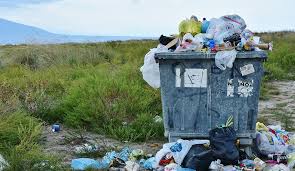Hazardous waste regulation has come a long way since its inception, driven by the need to protect both public health and the environment. This historical overview delves into the fascinating journey of hazardous waste regulations, highlighting key milestones, changing paradigms, and the driving forces that have shaped the way we manage hazardous materials today.
Early Beginnings:
Hazardous waste regulation in the United States traces its roots back to the early 20th century when industrialization was on the rise. During this period, however, there was little awareness of the potential dangers posed by hazardous materials. Toxic chemicals, radioactive substances, and other dangerous waste products were often discarded without regard for their long-term consequences.
Post-World War II Awakening:
The wake-up call came after World War II. The industrial and scientific advancements during the war had produced an unprecedented amount of hazardous waste. The tragic incident in 1947, known as the Texas City Disaster, where a ship carrying ammonium nitrate fertilizer exploded, causing massive destruction, was a turning point. It shed light on the pressing need for regulations.
Early Regulatory Measures:
In response to growing concerns, the U.S. government began implementing limited regulations. The 1956 Water Pollution Control Act marked the first federal effort to control water pollution, but hazardous waste management remained in the shadows. It wasn't until 1965 that the Solid Waste Disposal Act was enacted, which laid the groundwork for the management of non-hazardous solid waste.
Birth of the EPA:
The turning point in the evolution of hazardous waste regulations came with the establishment of the Environmental Protection Agency (EPA) in 1970, following the first Earth Day. The EPA was tasked with centralizing environmental regulation, and it became instrumental in shaping hazardous waste management.
Resource Conservation and Recovery Act (RCRA):
The landmark legislation that truly kickstarted modern hazardous waste regulation was the Resource Conservation and Recovery Act (RCRA) of 1976. RCRA laid the foundation for the "cradle-to-grave" management of hazardous waste, establishing guidelines for generation, transportation, treatment, storage, and disposal. It created a structured framework for hazardous waste management and made compliance mandatory for businesses.
Comprehensive Environmental Response, Compensation, and Liability Act (CERCLA):
In 1980, the Comprehensive Environmental Response, Compensation, and Liability Act (CERCLA), also known as Superfund, addressed the issue of abandoned hazardous waste sites. CERCLA empowered the government to identify, clean up, and hold responsible parties liable for the cleanup costs of contaminated sites, promoting the concept of "polluter pays."
Hazardous Waste Regulations in the 21st Century:
As science and technology have advanced, so too have hazardous waste regulations. In the 21st century, there has been a growing emphasis on risk assessment, waste minimization, and sustainable waste management practices. Regulations have evolved to address emerging contaminants, electronic waste, and the globalization of hazardous waste trade.
Conclusion:
The evolution of hazardous waste regulations is a testament to society's increasing awareness of the environmental and health risks associated with hazardous materials. From a lack of regulation and understanding in the early 20th century to the comprehensive regulatory framework we have today, the journey has been marked by significant progress. Yet, challenges persist, and future regulations will need to adapt to new scientific discoveries and emerging threats to ensure the continued protection of our planet and its inhabitants. Hazardous waste regulation remains an ever-evolving field, reflecting our commitment to safeguarding our environment for generations to come.


No comments yet